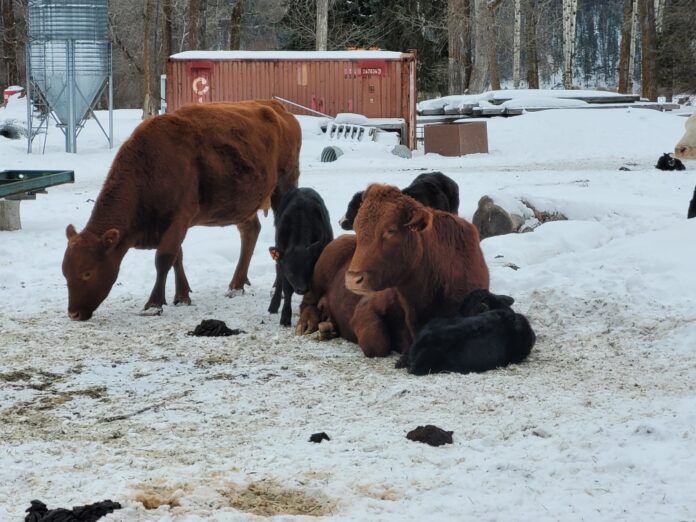Local ranchers are out helping their herds deliver calves while they deal with the February cold.
This calving season, the East Kootenay has dealt with a cold snap, and on and off snowfall events, which can put the lives of the young cows at risk if they don’t have a warm place to stay.
According to local rancher Gerald Gagne, cold weather can be detrimental, but that is not always the case.
“The warm weather will bring in scours and other diseases that can affect the calves, but if it’s too cold, that can also affect the calves,” explained Gagne. “There’s a fine line. Ideally, if you could hit two or three below with not much wind or rain, that would be an ideal calving season, but it’s not always like that. Warm weather can be as bad as really cold weather.”
Scours is a central term for infections from bacteria, viruses or parasites in baby cows that can cause diarrhea, dehydration and lethargy. An Oregon State University report said it has been known to kill calves if it is not treated quickly.
Gagne said he has to be ready 24 hours a day during this time of year because pregnant cows can give birth at any time of day.
“Cattle are just like people, it takes nine months. So you wait your nine months and they can start having them up to two weeks early, like people,” said Gagne. “Usually calving last about 45 days to two months.”
When it comes time to give birth, the animals can deliver their babies on their own most of the time.
However, ranchers still need to be nearby in case something goes wrong.
“Once in a while, you’ll have a backwards calf or one that’s a little too big for the mother and you have to help out,” said Gagne. “Usually with a backwards calf, you have to get in there as quick as you can to help out. We had one this year and it went well – we managed to pull it out and everything was good.”
Gagne has a smaller herd, but he said this allows him to keep a closer eye on each individual cow – which is particularly important during calving season.




